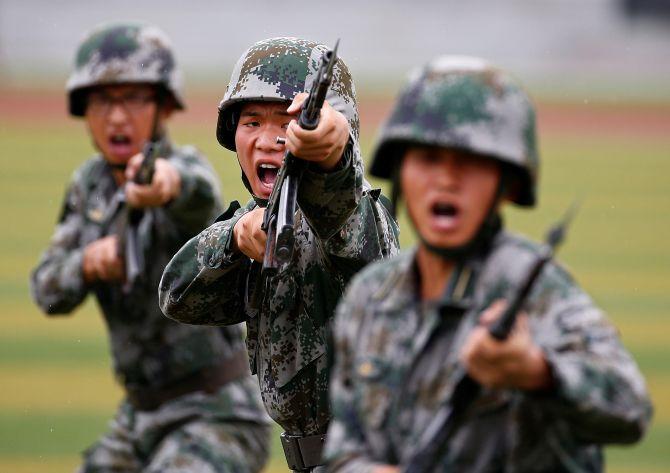Chinese incursions into India strategically planned: Study
November 11, 2022 08:32

Chinese infringements into the Aksai Chin region are not random, independent events but are part of a strategically planned and coordinated "expansionist strategy" to gain permanent control of the disputed border area, according to a study on Chinese border incursions into India by a team of international experts.
The study Rising tension in the Himalayas: a Geospatial Analysis of Chinese Border Incursions into India' by Northwestern University, Technical University of Delft in the Netherlands and the Netherlands Defence Academy presented a geospatial analysis of the incursions, using an original dataset that covers the past 15 years.
"We find that the conflict can be separated into two independent conflicts, west and east, centered around the major contested areas of Aksai Chin and Arunachal Pradesh. Building on insights from game theory, we conclude that the Chinese incursions in the west are strategically planned and aim for a permanent control, or at least a clearer status quo of the contested areas," the study said released on Thursday said.
For the study, the team defined an incursion' as any movement of Chinese troops across the border -- by foot or in vehicles -- into areas that are internationally accepted as India's territory. Then, they plotted each location on a map, identifying 13 hotspots where incursions happen most frequently.
In the 15-year dataset, the researchers noted an average of 7.8 incursions per year even though the Indian government's estimates are much higher.
The India-China border dispute covers the 3,488-km-long Line of Actual Control. China claims Arunachal Pradesh as part of southern Tibet while India contests it. Aksai Chin is a vast area in Ladakh which is currently under Chinese occupation.
According to Indian government data in 2019, the Chinese Army transgressed into Indian territory 1,025 times between 2016 and 2018. Then Minister of State for Defence Shripad Naik told the Lok Sabha in November 2019 that the number of transgressions by the Chinese Army in 2016 was 273 which rose to 426 in 2017. The number of such cases reported in 2018 was 326.
The study's authors are Jan-Tino Brethouwer and Robbert Fokkink of the Technical University of Delft, Delft Insititute of Applied Mathematics in Netherlands, Kevin Greene of Princeton University's School of Public and International Affairs, Roy Lindelauf of Netherlands Defence Academy, Faculty of Military Sciences in Breda, Netherlands, Caroline Tornquist of Dartmouth College's Department of Computer Science and V.S. Subrahmanian of Northwestern University's Department of Computer Science and Buffett Institute for Global Affairs in Evanston, US.
A press release from Northwestern said that the authors assembled a new dataset, compiling information about Chinese incursions into India from 2006 to 2020 and used game theory and statistical methods to analyse the data.
The researchers found that conflicts can be separated into two distinct sectors: west/middle (the Aksai Chin region) and east (the Arunachal Pradesh region).




 © 2024 Rediff.com -
© 2024 Rediff.com -